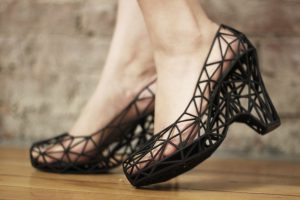In recent years, 3D printing has evolved from an experimental technology to an integral part of multiple industries. From manufacturing to healthcare and even the military, 3D printing is reshaping the way we design, produce, and think about the future of technology. As we explore its latest advancements, it’s clear that 3D printing is not just a trend but a profound shift toward more efficient, sustainable, and customized production. This article delves into 10 critical areas where 3D printing is making a significant impact, illustrating both its potential and challenges, supported by case studies and real-world examples.
1. 3D Printing in the Military: Enhancing Operational Efficiency

One of the most remarkable applications of 3D printing is in the military sector, where it is being used to create on-demand parts for machinery and weapons. The U.S. Navy, for example, has adopted Liquid Metal Jetting (LMJ) 3D printers aboard ships like the USS San Diego. These printers can produce essential components on-demand, such as engine parts and weapon components, which reduces the need for extensive inventories and supply chain dependency.
This innovation has a profound impact on operational readiness, as it allows ships to be self-sufficient and flexible in remote areas where traditional supply lines may be disrupted. The ability to print parts on-site means quicker repairs and less downtime, ensuring that military equipment remains functional even in challenging environments. In addition, the use of 3D printing minimizes shipping costs and time, making military operations more agile and efficient.
2. Automotive Industry: Streamlining Production with 3D Printing
The automotive industry is increasingly incorporating 3D printing into their manufacturing processes. Subaru is one of the key players leading this change by adopting 3D printing for the low-volume production of car parts. This approach allows Subaru to prototype complex parts quickly and efficiently, skipping the traditional molding process, which can be both costly and time-consuming. For example, 3D printing is used to produce unique, intricate components that are not feasible with traditional manufacturing methods.
One notable example is Subaru’s use of 3D printed parts for its Subaru XV model. The company has successfully integrated additive manufacturing to create customized features like lightweight components that enhance fuel efficiency. As 3D printing becomes more refined, the potential for mass-producing auto parts with reduced lead times and cost continues to grow. This could revolutionize the way automakers approach everything from vehicle customization to the sustainability of production processes.
3. Sustainable Water Treatment: 3D Printing Ceramic Filters
One of the most pressing global challenges is water contamination, particularly from “forever chemicals” such as per- and polyfluoroalkyl substances (PFAS). These chemicals, which do not break down naturally, are harmful to both the environment and human health. In response, researchers at the University of Bath have pioneered the use of 3D printed ceramic filters capable of removing up to 75% of these harmful chemicals from water.
The 3D printed filters are not only effective but also sustainable. They can be regenerated through thermal treatment, making them reusable. This breakthrough offers a promising solution to the growing issue of water contamination, especially in industries that rely on large-scale water purification systems. The ability to produce these filters efficiently and at scale could open up new business opportunities in water treatment and purification, marking a significant step forward in tackling environmental hazards.
4. The Rise of Custom Footwear: 3D Printed Sneakers

The footwear industry is being disrupted by 3D printing technology, which allows for highly customized and on-demand production. Zellerfeld, a company that specializes in 3D-printed sneakers, exemplifies this innovation. By using smartphone scans of customers’ feet, Zellerfeld creates perfectly fitted shoes tailored to each individual. This personalization is a game-changer, as it eliminates the need for standard sizing and provides a level of comfort previously unattainable with traditional mass production methods.
Zellerfeld’s business model is built on demand-driven production, with customers able to reserve their place in the manufacturing queue with a small downpayment. The waiting list for a pair of these custom sneakers can stretch for several months, a testament to the growing demand for personalized products. The company has also drastically reduced production times, from days to just 20 hours per pair, thanks to advancements in 3D printing technology.
This model could revolutionize the footwear industry, providing both greater customer satisfaction and a more sustainable alternative to traditional shoe manufacturing, which often involves high levels of waste.
5. Advancements in Healthcare: Bioprinting and Lab-Grown Tissues
The healthcare industry is exploring the potential of 3D printing through bioprinting, which uses cells and biomaterials to create functional tissue. Frontier Bio, for example, has developed lab-grown lung tissue using 3D printing technology. This breakthrough has the potential to transform the treatment of respiratory diseases like chronic obstructive pulmonary disease (COPD) and lung cancer. Additionally, the ability to print lung tissues can improve drug testing accuracy and expedite the development of therapies.
Bioprinting could also pave the way for organ transplants in the future. As research progresses, scientists hope to one day print fully functional organs for transplantation, alleviating the shortage of donor organs. While still in its early stages, the potential of 3D bioprinting to revolutionize medical treatments and organ replacement is immense.
6. Graphene-Based Materials in Construction: A Sustainable Future
3D printing is making its way into the construction industry, where innovative materials are being developed to reduce environmental impact. One such material is graphene, a substance known for its strength and lightweight properties. Balfour Beatty, a global construction firm, has partnered with Versarien to explore graphene-based 3D printable mortar. This collaboration is aimed at creating more sustainable, low-carbon materials for construction projects.
Graphene-enhanced materials offer numerous benefits, such as reducing the amount of raw material required for construction and lowering carbon emissions. As the construction industry looks for ways to meet sustainability targets, graphene-based 3D printing materials could play a pivotal role in reshaping the way buildings and infrastructure are designed and constructed.
7. Reshoring Manufacturing: Strengthening Local Production
As global supply chains face increasing challenges, many countries are looking to reshore manufacturing processes to reduce reliance on foreign production. The state of New York, for instance, has launched a $200 million initiative called ON-RAMP, which aims to train workers in advanced manufacturing skills, particularly in areas like semiconductor and additive manufacturing. This initiative could indirectly benefit the 3D printing sector by ensuring a highly skilled workforce capable of meeting the demands of cutting-edge technologies.
Reshoring efforts are particularly relevant in the context of 3D printing, as the technology enables more localized, on-demand production. By investing in a skilled workforce and developing regional hubs, companies can reduce the risk of supply chain disruptions while enhancing the flexibility and sustainability of their manufacturing processes.
8. Footwear Industry Disruption: 3D Printing for On-Demand Production
The footwear industry is undergoing significant disruption as 3D printing technologies move from prototyping to full-scale production. Companies like Fused Footwear, which operates a small 3D print farm in Hong Kong, are already capitalizing on the potential of low-volume, on-demand sneaker production. Fused Footwear’s business model focuses on producing limited batches of 3D-printed shoes, which are customized to meet individual customer preferences.
This approach contrasts sharply with the traditional footwear industry, where companies like Nike and Adidas rely on mass production and large-scale imports. Experts believe that the future of the footwear market may lie in localized, on-demand manufacturing, which would drastically reduce waste and improve sustainability. However, large brands are hesitant to fully embrace 3D printing for large-scale production due to the lower profit margins associated with smaller, custom runs.
9. Graphene and 3D Printing in Construction: Paving the Way for Sustainable Infrastructure

The use of graphene in 3D printing for construction is an emerging trend with the potential to transform the industry. Versarien’s partnership with Balfour Beatty to develop graphene-enhanced mortar is an example of how this material can help meet the construction sector’s sustainability goals. Graphene’s properties—such as strength, flexibility, and lightness—make it an ideal additive for 3D printed construction materials, which could significantly reduce environmental impact while also cutting costs.
The development of graphene-based materials for 3D printing could lead to more durable, sustainable, and cost-effective building methods. As the technology matures, it may become a cornerstone of the green construction movement, helping to meet the growing demand for eco-friendly infrastructure solutions.
10. Regulatory Challenges: Addressing the Threat of 3D Printed Firearms
One of the more controversial applications of 3D printing is its potential use in manufacturing firearms, specifically untraceable “ghost guns.” As 3D printers become more accessible, concerns have arisen about their potential use in illegal weapon production. In response, the U.S. government has established the Emerging Firearms Threats task force to examine the risks posed by 3D printed guns and other untraceable firearms.
This development highlights the need for regulations and oversight in the 3D printing industry. While 3D printing holds incredible promise for legitimate applications, its misuse in areas like firearms production raises significant concerns about safety and security. Regulatory bodies are working to ensure that 3D printing is used responsibly while continuing to foster the growth of additive manufacturing. As the technology matures, regulatory frameworks will be essential to ensuring that 3D printing benefits society without enabling harmful activities.
Conclusion: A Future Shaped by 3D Printing
The potential of 3D printing to reshape industries and create innovative solutions is truly remarkable. From military applications and automotive manufacturing to the healthcare industry and beyond, the benefits of 3D printing are clear: faster production times, reduced costs, customization at scale, and sustainability. However, as with any emerging technology, there are challenges that need to be addressed, from the complexities of regulation to the need for skilled workers and the protection against misuse.
As 3D printing continues to evolve, we can expect even more groundbreaking applications and innovations. Industries across the globe are already reaping the rewards of this transformative technology, and its impact will only grow in the years to come. Whether it’s improving military efficiency, revolutionizing healthcare, or offering sustainable solutions for construction, 3D printing is at the forefront of technological advancement, and its role in shaping our future is undeniable.




